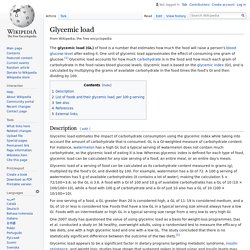

Response to Dr. Gabriel Cousen's Anti-Fruit Video. Glycemic load. The glycemic load (GL) of food is a number that estimates how much the food will raise a person's blood glucose level after eating it.

One unit of glycemic load approximates the effect of consuming one gram of glucose.[1] Glycemic load accounts for how much carbohydrate is in the food and how much each gram of carbohydrate in the food raises blood glucose levels. Glycemic load is based on the glycemic index (GI), and is calculated by multiplying the grams of available carbohydrate in the food times the food's GI and then dividing by 100. Description[edit] Glycemic load estimates the impact of carbohydrate consumption using the glycemic index while taking into account the amount of carbohydrate that is consumed. Body Fat and Toxicity. The Process of Fasting...What Actually Happens When We Fast? Why 21 days or more water fasting.
The pros and cons of Very Short Fasts. The Benefits of Fasting...(long enough and properly) Fasting Alone. Finding Your Optimal Weight. Gray Hair: What Does it Really Mean? The Benefits of Fasting...(long enough and properly) Function After Fasting: Taking it to the Stars and Beyond. Succeeding After the Fast. Frequently Asked Questions About Water Fasting. What Can I Heal via Fasting?